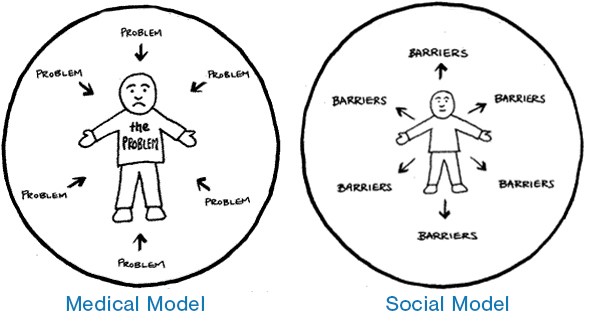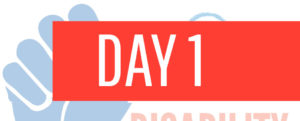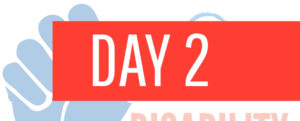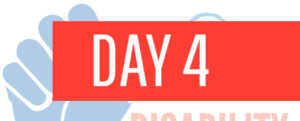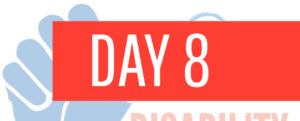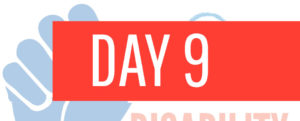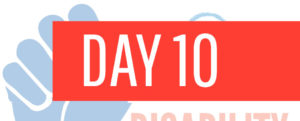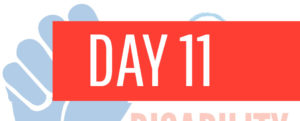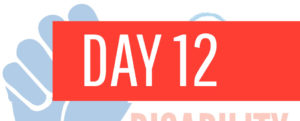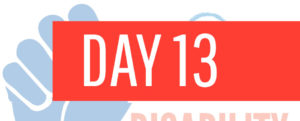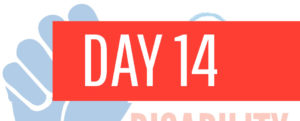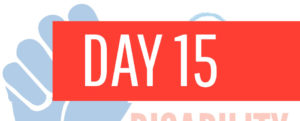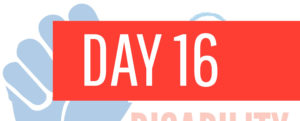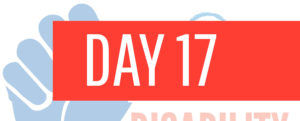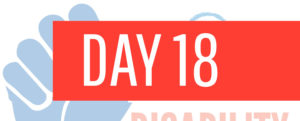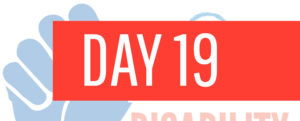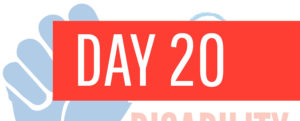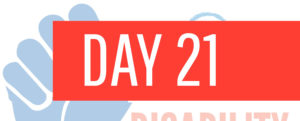Day 3: From Awareness to Acceptance
Medical Model vs. Social Model of Disability
The medical model and the social model are two different ways of framing disability.
Most people outside of the disability community think of disability within the framework of the medical model — where someone with a disability is thought to have an “impairment” that should be “fixed” so they can be as “normal” as possible. This casts disability in a very negative light and leaves little room for people with disabilities to feel pride in their identity as a person with a disability.
The social model of disability proposes that disability is caused not by a person’s body or diagnosis, but by the way society is designed and organized. This places no judgment on the person with a disability and instead recognizes that societal barriers are the problem to be fixed. If a person who is paraplegic can’t access a restaurant, it is not their paraplegia or their wheelchair that is the barrier – the lack of a ramp is the barrier. This shift in attitude creates an environment where people with disabilities are accepted as equal and valued members of society.
The shift from a perspective of mere awareness of disability to full acceptance of people with disabilities requires society to take responsibility for creating accessible and inclusive communities.

Read
- ASAN: Acceptance vs. Awareness
https://autisticadvocacy.org/2012/04/acceptance-vs-awareness/
- Foundation of People with Learning Disabilities: Social Model of Disability
https://www.learningdisabilities.org.uk/learning-disabilities/a-to-z/s/social-model-disability

Watch
What is the Social Model of Disability (3:07)
https://www.youtube.com/watch?v=0e24rfTZ2CQ
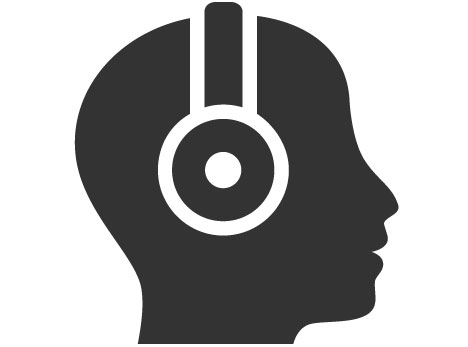
Listen
- NPR: The Social Side of Stuttering (15:00) https://www.npr.org/2021/01/19/958423970/the-social-side-of-stuttering
- (transcript): https://www.npr.org/transcripts/958423970)
Discussion
- Is the social model of disability a new concept for you? What do you think about it?
- When you encounter people with disabilities, do you find yourself feeling that they are “broken”? How could you shift your thinking to a more social model?
- What barriers have you seen in your community that prevent the inclusion of people with disabilities?
Image/Infographic:
